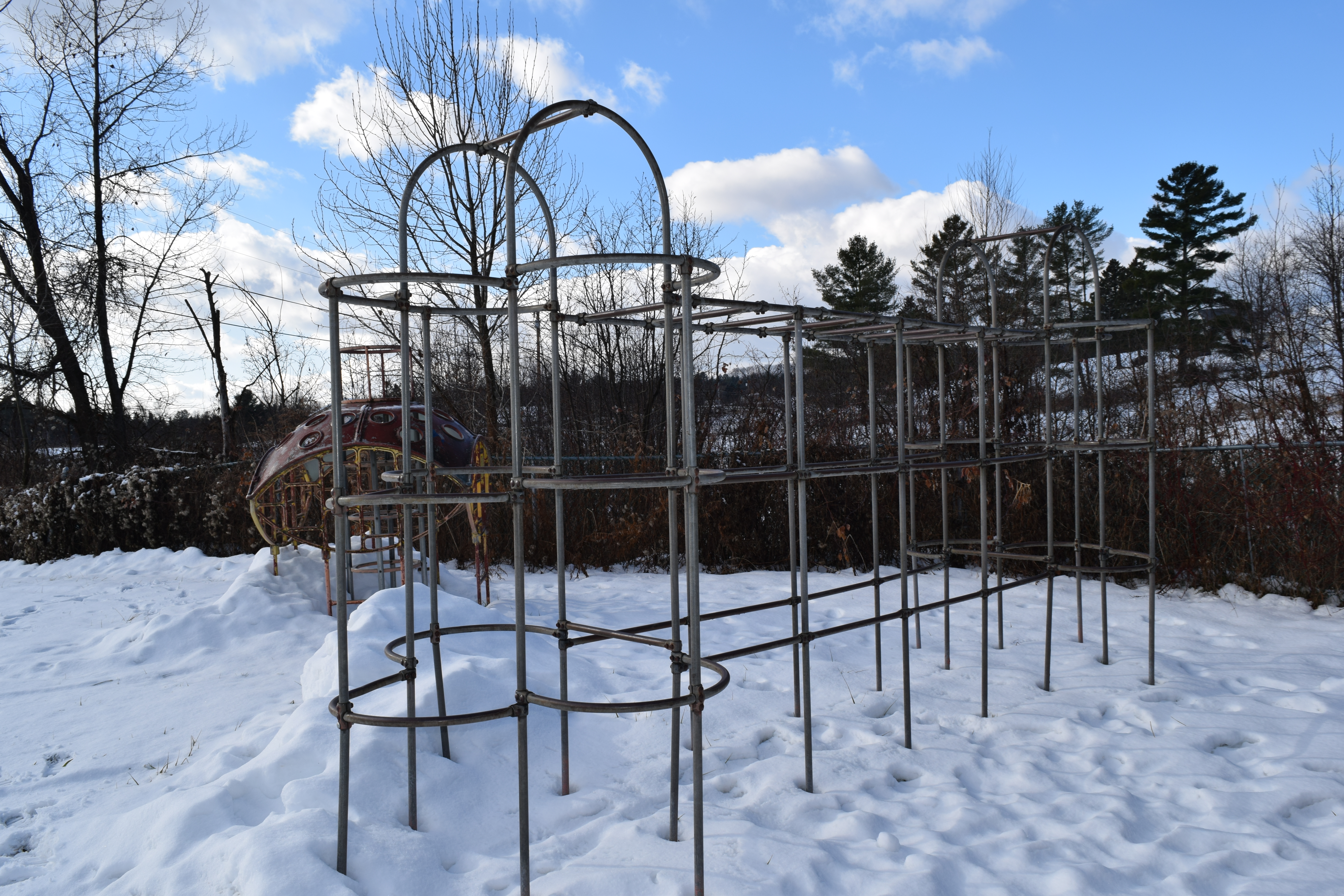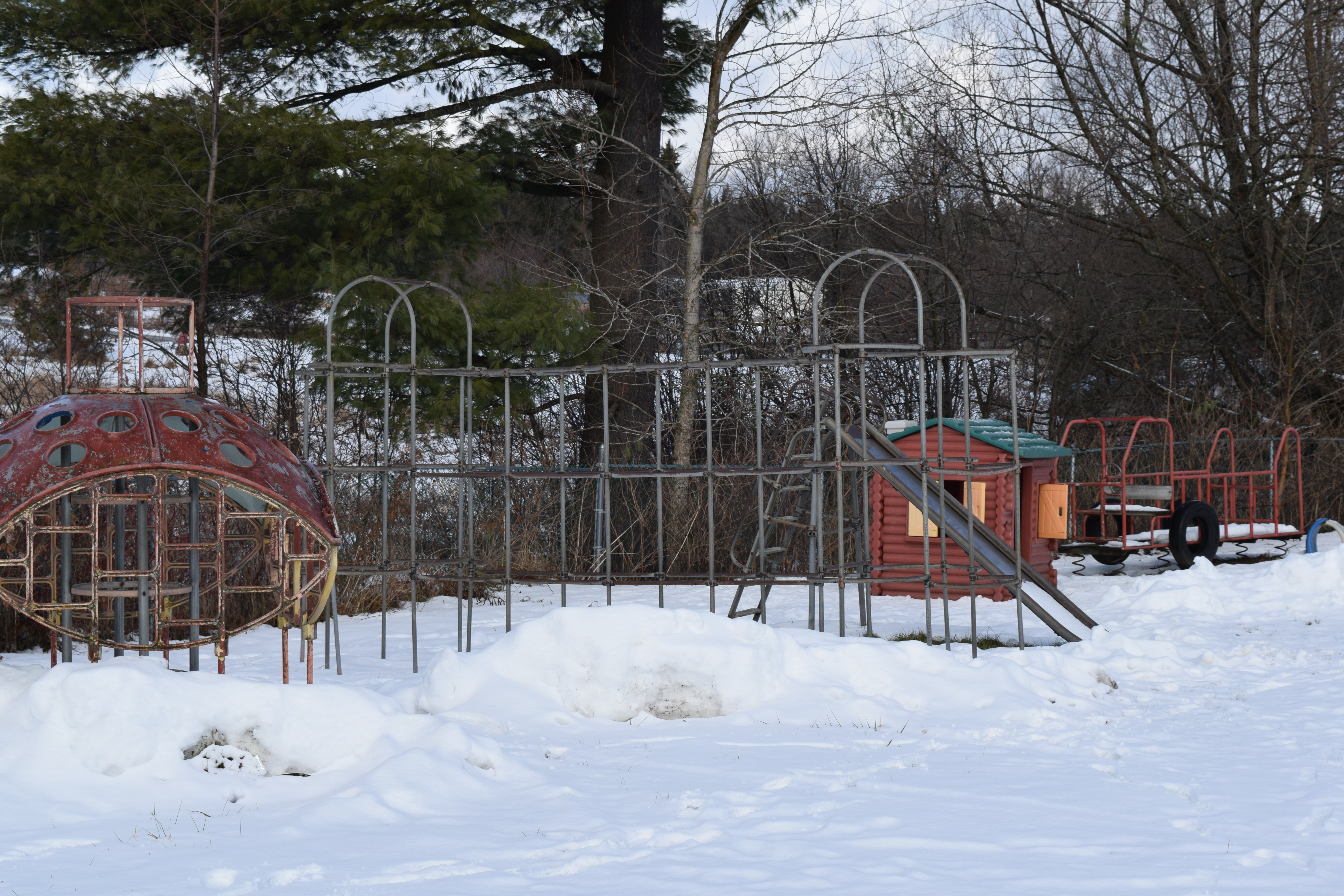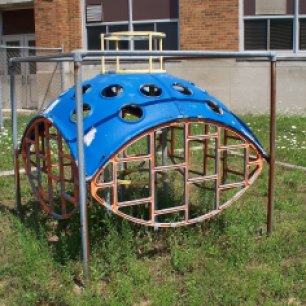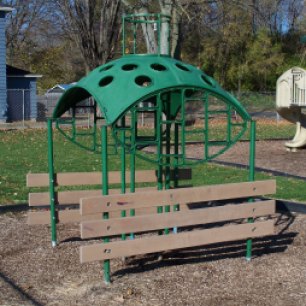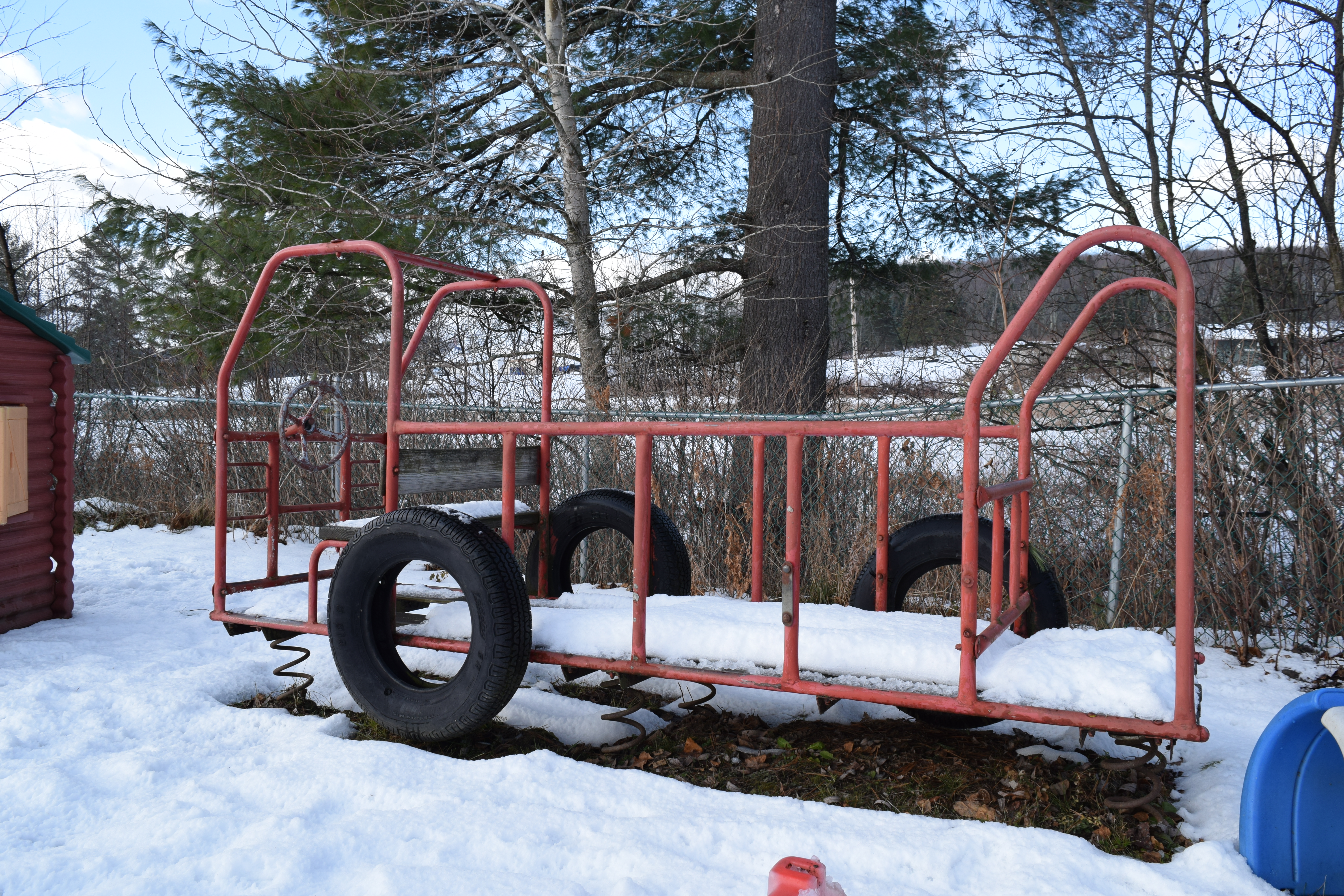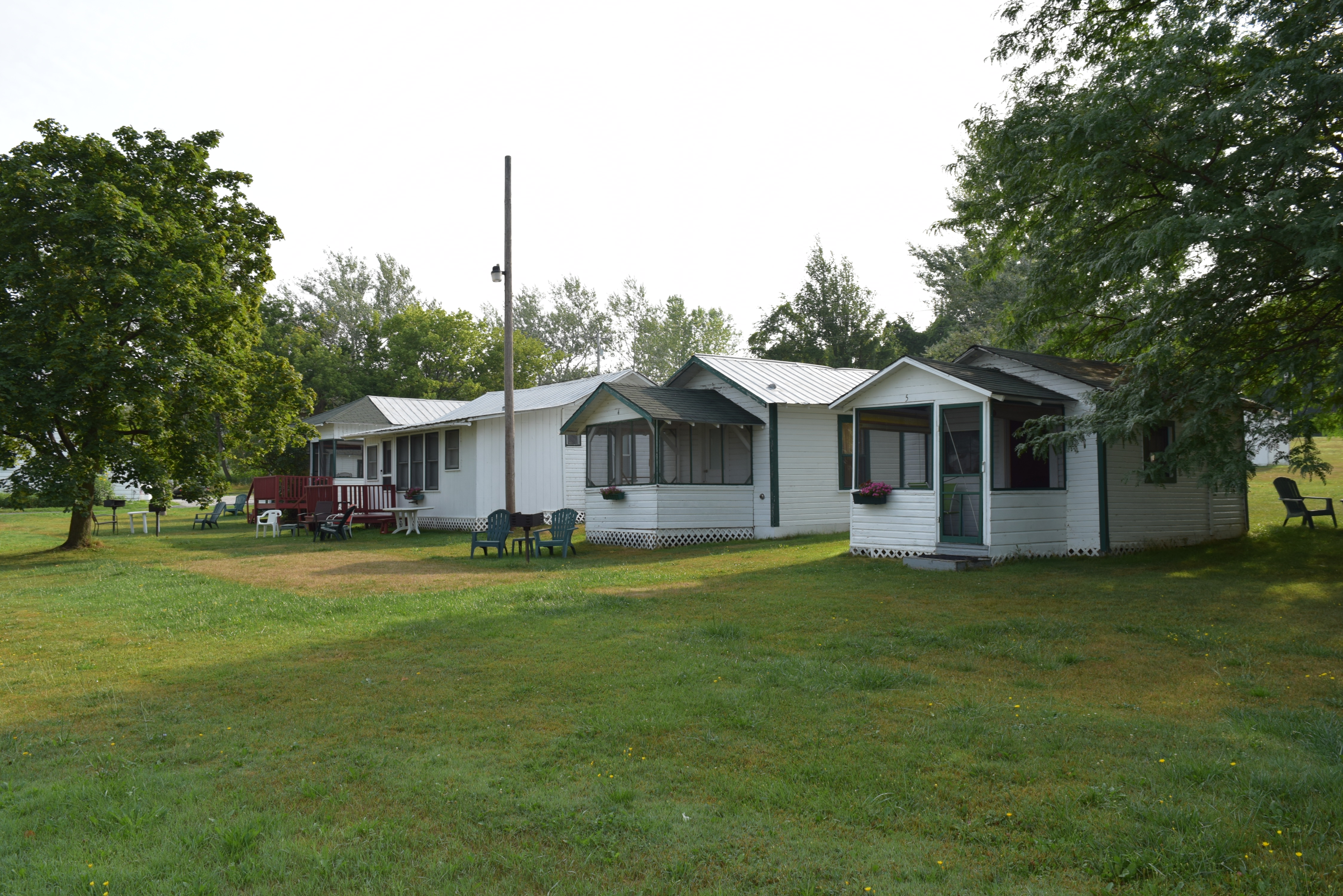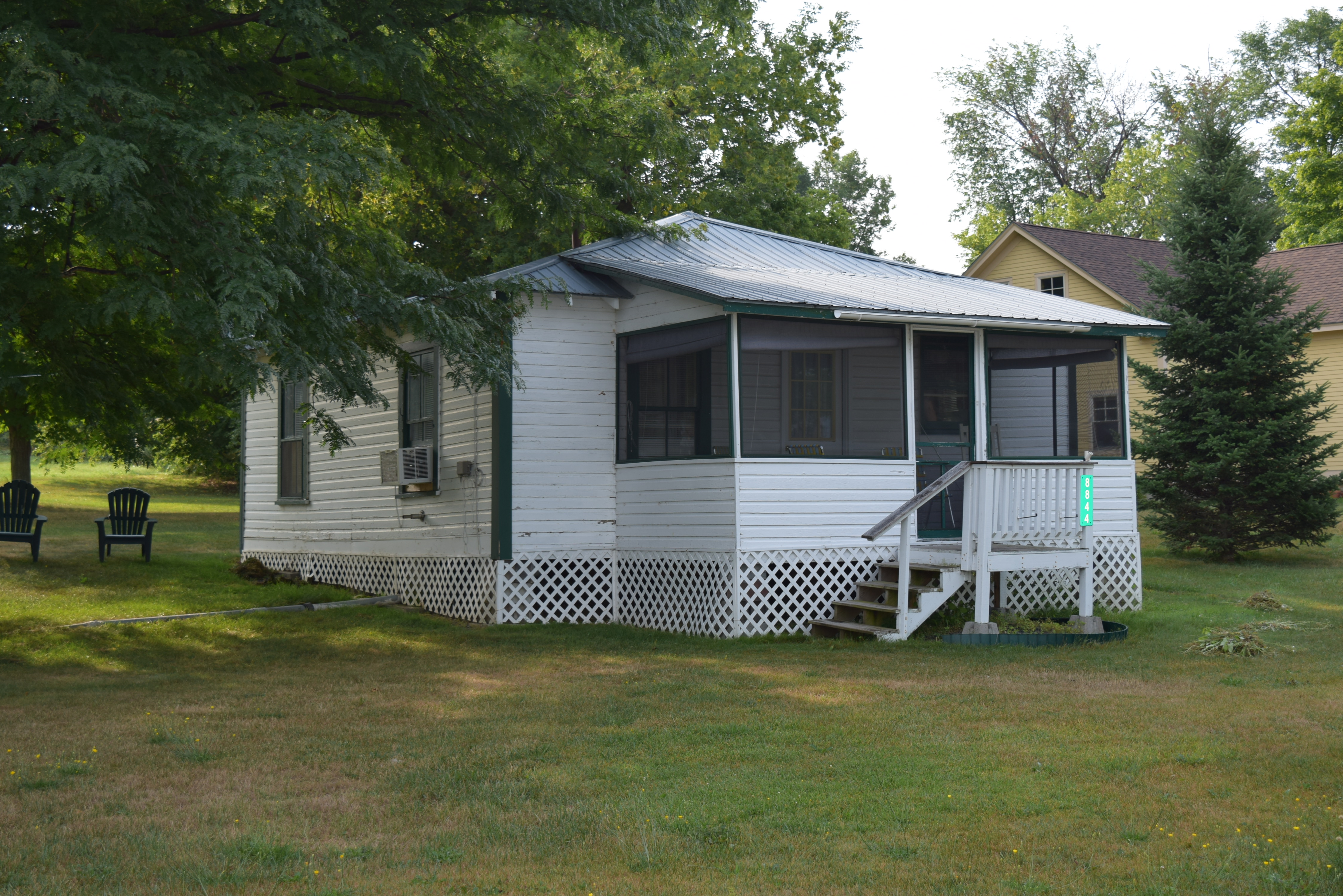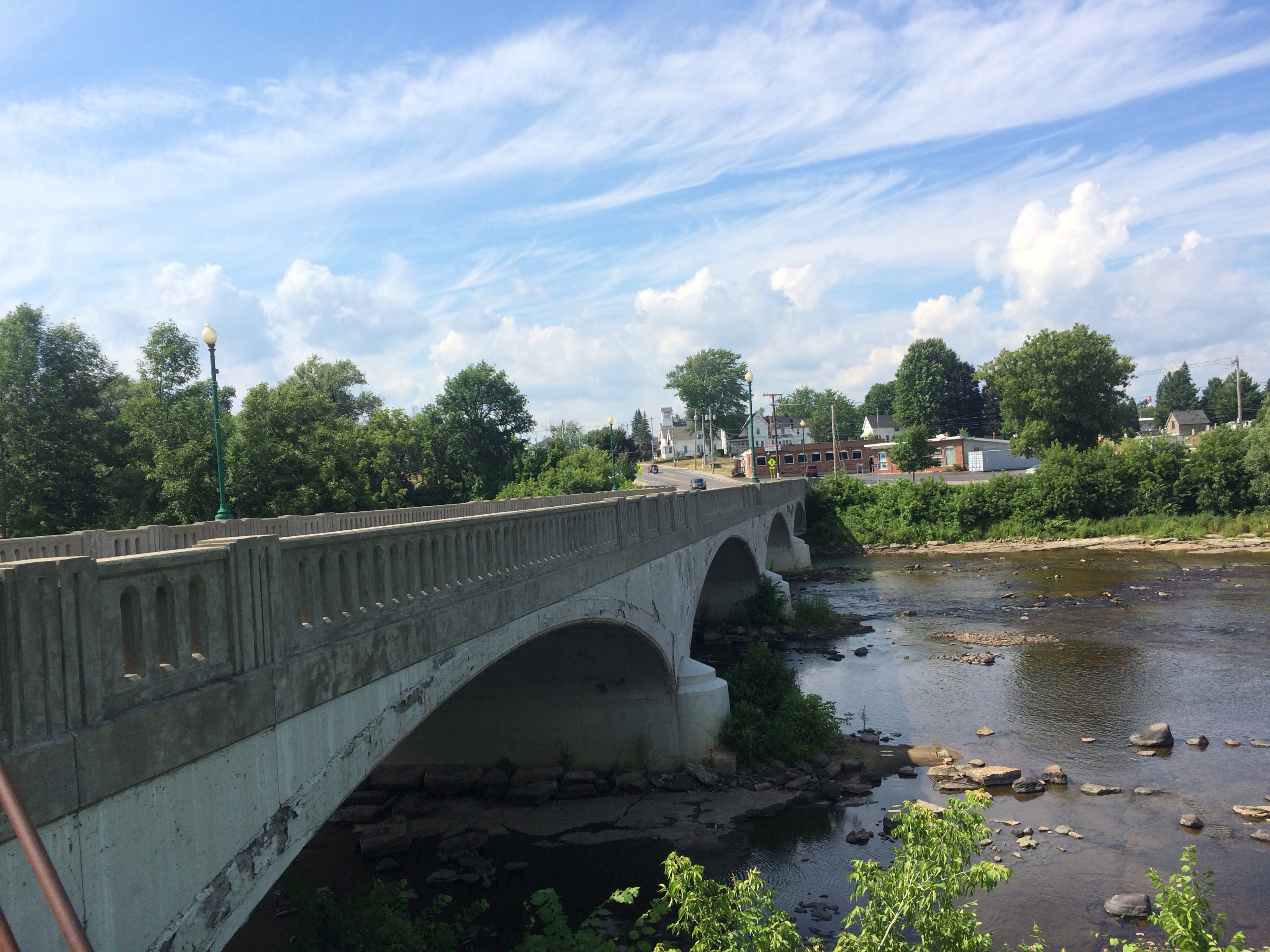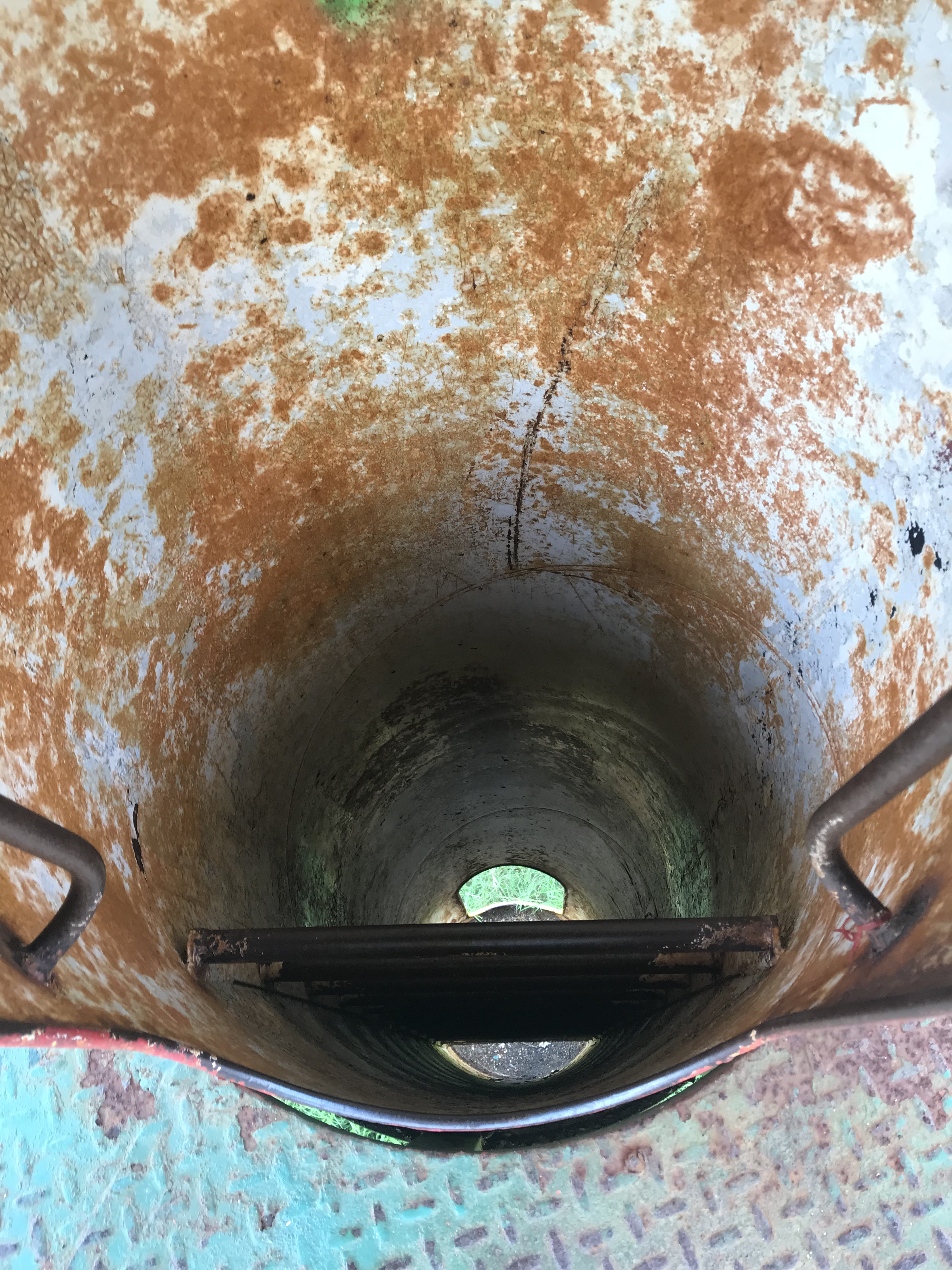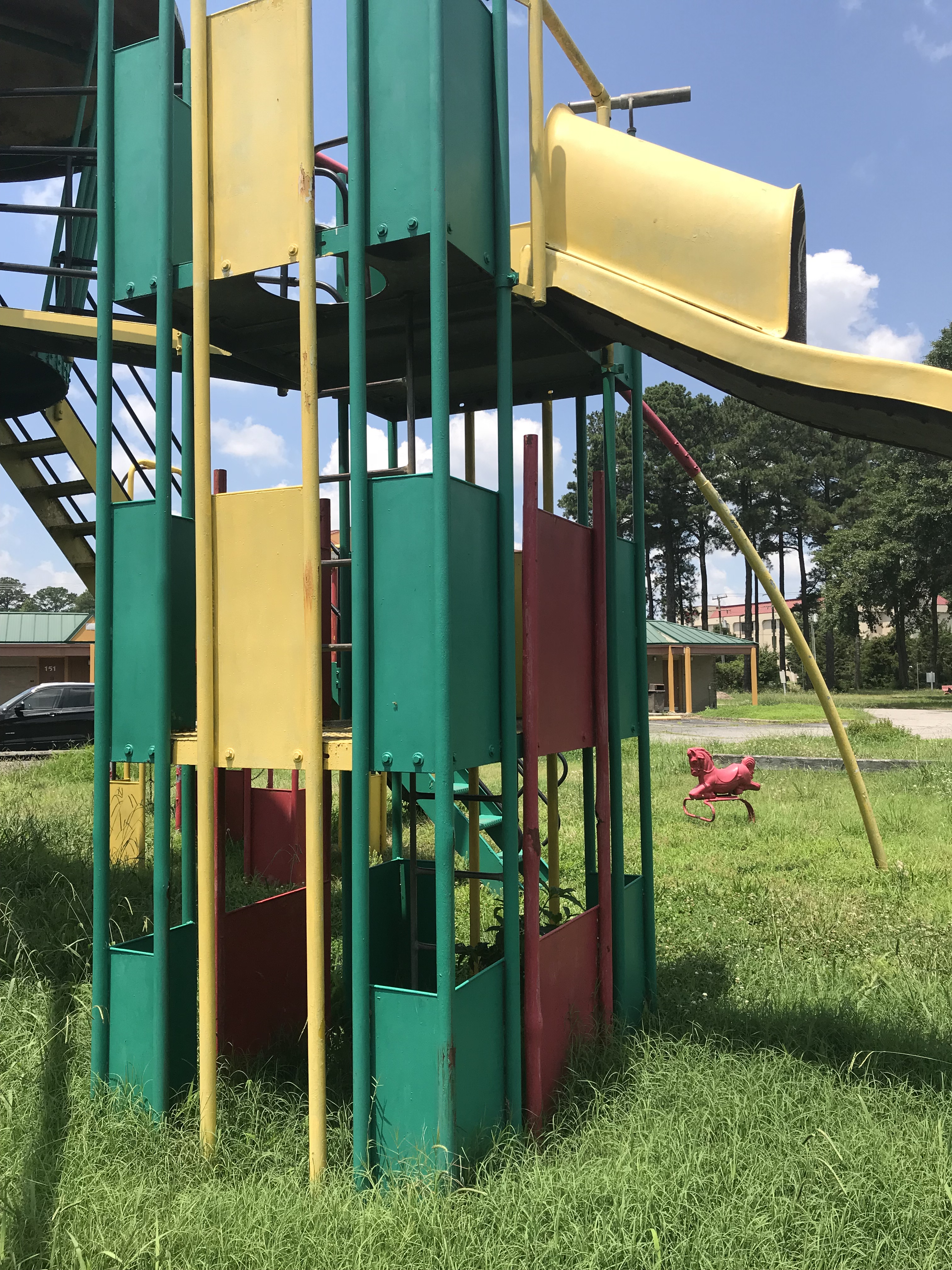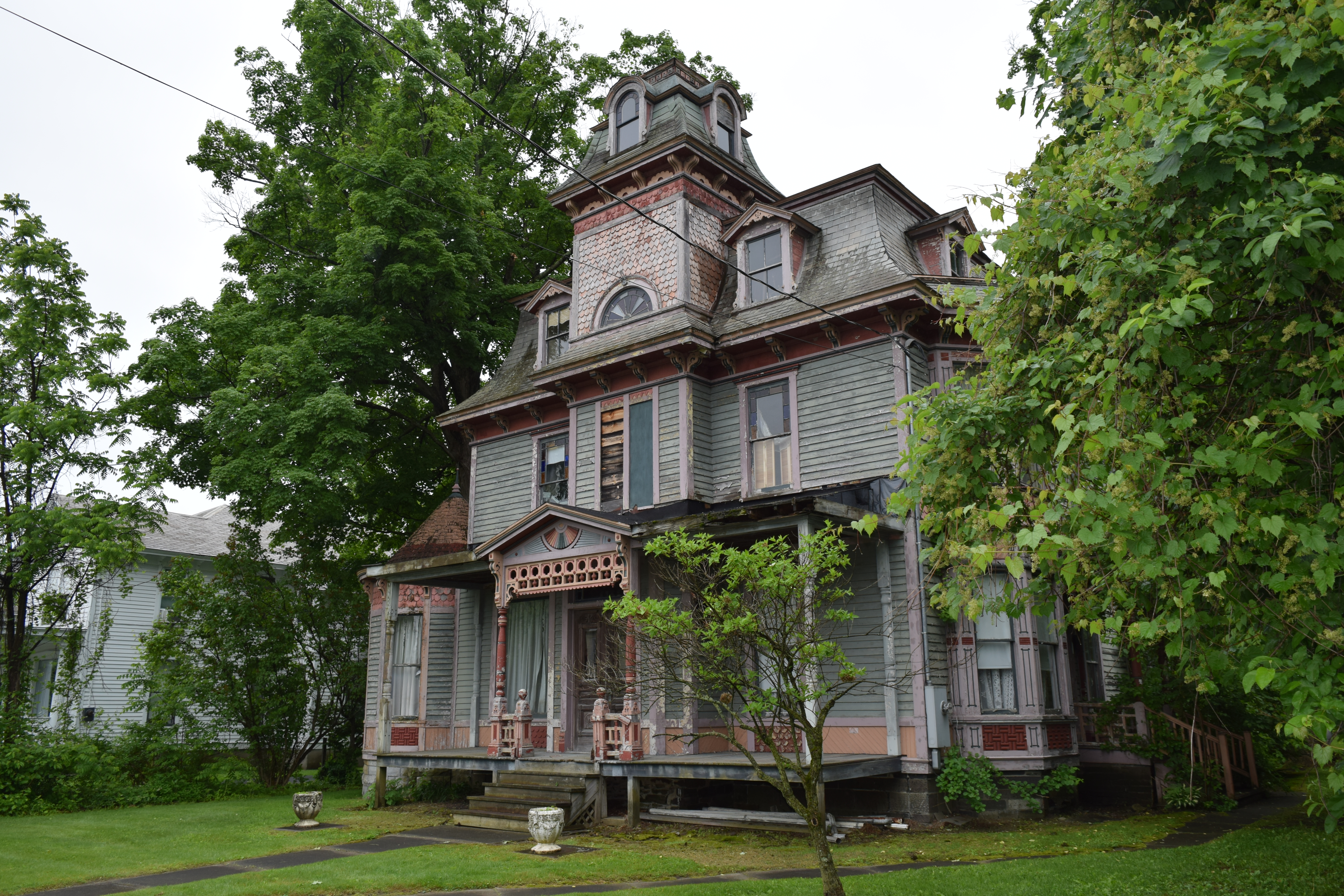Happy New Year, friends! I hope 2021 brings you good health, happiness, prosperity, and may it bring peace as well. I think a good way to start 2021 on Preservation in Pink is with a fun playground post. This is the one I referred to as “waiting in the wings.” I hope you enjoy it. Thanks for sticking around, preservationists and friends.
Last winter, I wrote about a playground in Brownington, Vermont. On the playground, I found a mysterious piece of playground equipment – one that was new and unusual to me. Internet searching led me to find identical pieces, but no information about it. Readers and Instagram followers assumed what I did – a space age era piece of playground equipment, but nothing definitive.
Fortunately, an Instagram acquaintance (@followthebreadcrumbs2) gave me some information about this apparatus. She said that she was fairly certain it was designed by David Aaron and manufactured by Alcoa (Aluminum Company of America) in the 1950s. A quick search using that information and she was right. That was exactly the information I needed, and it made my day (yes, yes, I’m a playground nerd).


Historically, playground equipment was made of steel. Aluminum had been widely used during the war years as a component in airplane manufacture. As part of its strategy to win new markets after the end of Word War II, Alcoa tried to catch the interest of the design community and make the consumer comfortable with this material (source: http://architekturfuerkinder.ch/david-aaron/). This effort was known as the “Forecast Program”. For this venture Alcoa focused on the designer as ‘the man to stimulate the consuming public with inventive projects for the home”, and invited a range of designers including Isamu Noguchi, Alexander Girard, Charles and Ray Eames and many others to participate, including David Aaron. What Alcoa wanted from the designers was not a product to manufacture, but a concept to promote.
“With the new Forecast design, aluminum is given its first serious introduction into outdoor playground applications. The lightweight, rust-proof characteristics of the metal, – plus its ability to be colored, make it a maintenance-free, “natural” for playground use. The climbing tree is scheduled for actual production by Creative Playthings, Inc., New York City.” The “tree,” other Forecast items, and products of Massena Operations of Alcoa was on display during “Aluminum Days” of the Massena (NY) Vacationland Festival (1958).”
Additionally, David Aaron was the Director of the Playground Corporation of America. Mr. Aaron designed these midcentury pieces called “play shell-ters” with 13 designs for ages 18 months to 13 years, according to the 1959 Playground Corporation of America Catalog.
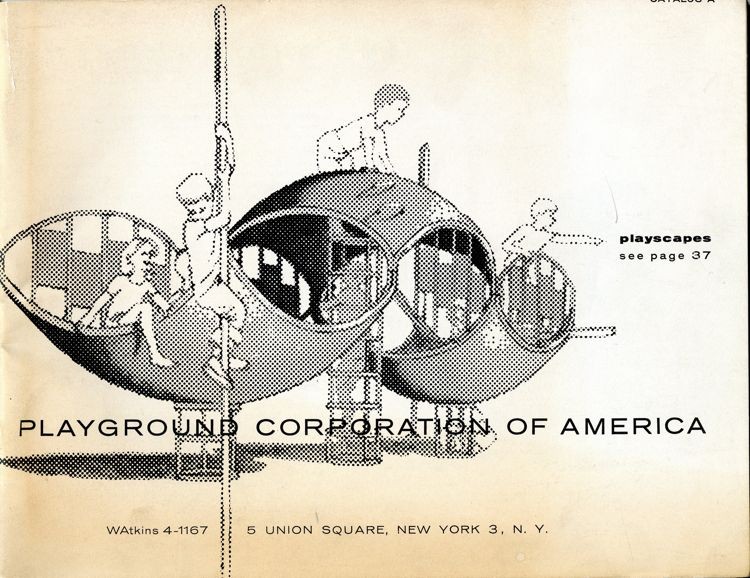


The September/October 1965 Playground Corporation of America information booklet titled “Park Practice Grist” discusses new concepts in playgrounds, specifically some that allow children to play independently, energetically, even with short attention spans, while growing and learning confidence. Playgrounds were designed to stir the imagination; each playground apparatus could be whatever a child imagined. And because equipment was stationary (unlike swings or merry-go-rounds), it was thought to be safe. The booklet describes “shell-ters” as:
Dome-shaped shells of cast aluminum are caves, ships, playhouses, crows’ nest, forts…whatever busy young imaginations proclaim them to be. They can be installed concavely or convexly or upended to form curved walls. They are used in a variety of ways in combination with sliding poles and/or with such climbing apparatus as cylindrical “ring dings’ and grill like “wing-dings’. These versatile shapes are made of non-corrosive aluminum, require no maintenance.

David Aaron’s obituary reads:
David Aaron, a designer of playgrounds, died of a heart attack Tuesday at his home in Accord, N.Y. He was 60 years old. Mr. Aaron was the founder of the Mid-Hudson Institute of Community Design for the Young in Poughkeepsie, with which he was associated at the time of his death. Among his creations were the playground for the United States pavilion at the Moscow Fair in 1959, the Playground of Tomorrow at the 1964-65 World’s Fair in New York and the playground at an elementary school in Bronxville, N.Y. He is survived by his wife, Maia; two sons, Peter, of Brooklyn, and Michael, of Chicago; a brother, Howard, of Bridgeport, Conn., and one grandchild.
Thank you to David Aaron for your devotion to playgrounds and creative play.
This was much more information than I was expecting to find about a single playground apparatus. I still don’t know why a single piece of playground apparatus was placed behind a church in Brownington, VT. Perhaps something second-hand from a school or a town park? Or one piece specifically purchased for the church? If anyone knows, I’d be thrilled to learn.
Theories of play and playground equipment come and go like all trends; it is interesting to find historic playground equipment – usually on private property or in rural areas. Have you seen any of these pieces at playgrounds?



